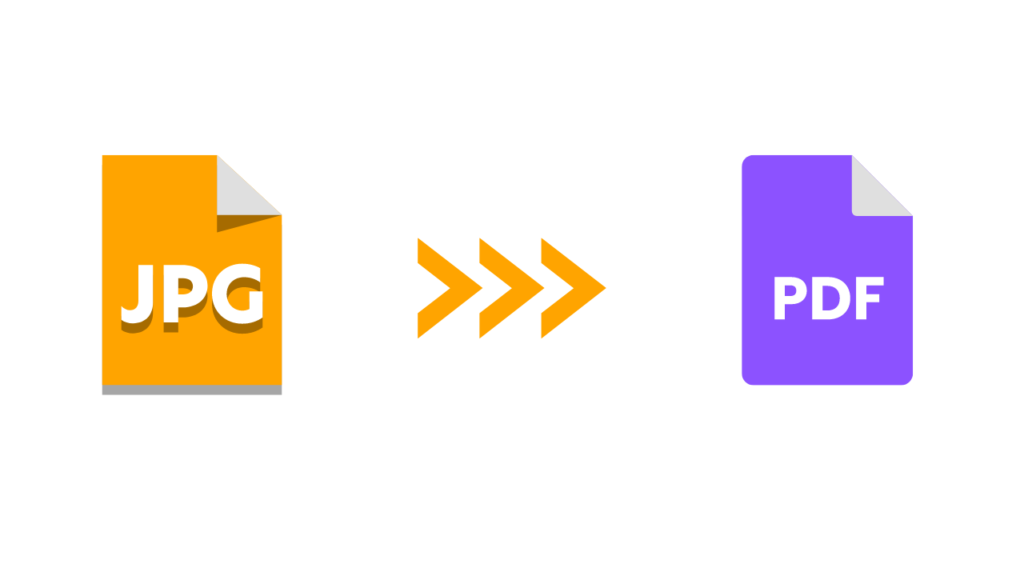Images and documents are often shared and stored in different formats. One common task that many people encounter is the need to convert an image to PDF. Whether it’s for professional use, school projects, or personal organization, converting images to PDFs offers numerous advantages. This article will explore why you should consider converting your images, how it works, and the best ways to do it.
Understanding the Process of Converting Image to PDF
Converting Image to PDF might sound complicated, but it’s actually a straightforward process. It involves using a tool or software that takes your image file, like a JPG, and transforms it into a PDF. A PDF (Portable Document Format) is a type of file that preserves the formatting and layout of the content, making it a popular choice for sharing documents.
Why Should You Convert Images to PDF?
You might be wondering why it’s worth the effort to convert an image to PDF. Here are some key benefits that make this process highly useful:
- Preserving Image Quality: When you convert a pic to PDF, the quality of the image is preserved. Unlike other file formats that might compress or degrade the image, a PDF keeps it looking sharp and clear.
- Uniformity Across Devices: PDFs are designed to look the same on any device. Whether you open a PDF on a computer, tablet, or smartphone, the content remains consistent. This uniformity is particularly important for professional presentations or important documents.
- Combining Multiple Images: If you have several images that you want to keep together, converting them into a single PDF file is a great solution. This is much more efficient than sending or storing multiple separate images.
- Enhanced Security: PDF files can be password-protected, adding a layer of security to your documents. If your images contain sensitive information, this feature is invaluable.
- Easy Sharing: PDFs are widely accepted and easy to share via email, cloud storage, or social media. When you convert images to PDF, you ensure that the recipient can easily open and view the file without any compatibility issues.
How to Convert Image to PDF: Step-by-Step Guide
Now that you understand why converting images to PDF is beneficial, let’s look at how you can do it. The process is simple and can be done using various tools, either online, via mobile apps, or through software on your computer.
Step 1: Choose Your Image
Start by selecting the image you want to convert. This could be a JPG, PNG, or any other image format. If you have multiple images, decide whether you want to combine them into one PDF or create separate PDF files for each image.
Step 2: Select a Conversion Tool
There are several tools available that can help you convert images to PDF. You can use an online JPG to PDF converter, download a mobile app, or install software on your computer. Each method has its advantages:
- Online Converters: Websites like Smallpdf, ConversionFree, or Adobe’s online converter are easy to use and don’t require any installation. Simply upload your image, and the tool will do the rest.
- Mobile Apps: Apps like Adobe Scan, CamScanner, or Microsoft Office Lens allow you to convert images directly from your smartphone. These apps are especially handy when you need to convert documents on the go.
- Software Programs: If you frequently need to convert images to PDF, installing software like Adobe Acrobat or Nitro PDF might be a good idea. These programs offer more features, like editing the PDF or merging multiple files.
Step 3: Adjust the Settings
Before converting your image, you may want to adjust some settings. For example, you can choose the layout, orientation, and size of the PDF. Some tools also allow you to add borders or crop the image. Make sure the settings match your needs before proceeding.
Step 4: Convert the Image
Once you’re satisfied with the settings, click the convert button. The tool will process the image and create a PDF file. This usually takes just a few seconds, depending on the size of the image and the speed of your internet connection (if using an online tool).
Step 5: Download and Save Your PDF
After the conversion is complete, you can download the PDF file to your device. It’s now ready to be shared, printed, or stored. If you’re using a mobile app, the PDF might be automatically saved to your cloud storage, making it easy to access from any device.
Tools for Converting Image to PDF: Finding the Right One
With so many options available, choosing the right tool to convert images to PDF can be challenging. Here are some factors to consider when making your decision:
Ease of Use
The tool you choose should be easy to use, especially if you’re not tech-savvy. Look for a converter with a user-friendly interface that guides you through the process step by step.
Quality of Conversion
Not all converters are created equal. Some might compress the image too much, resulting in a loss of quality. Make sure the tool you choose maintains the quality of your image in the PDF file.
Speed and Efficiency
If you need to convert multiple images, you’ll want a tool that works quickly and efficiently. Some online converters have limits on the number of images you can convert at once, so consider this if you’re working with large batches of files.
Security Features
If you’re converting images that contain sensitive information, look for a tool that offers security features like password protection or encryption. This will help keep your documents safe from unauthorized access.
Cost
While many tools are free, some offer premium features for a fee. Consider whether these extra features are necessary for your needs. If you only need to convert a pic to PDF occasionally, a free tool might be sufficient.
Common Mistakes to Avoid When Converting Images to PDF
Even though converting an image to PDF is a simple process, there are some common mistakes that people often make. Here’s how to avoid them:
Low-Resolution Images
Using a low-resolution image can result in a blurry or pixelated PDF. Always use the highest quality image you have to ensure the best results.
Incorrect Page Size
When converting images, make sure the page size of the PDF matches the size of the image. If the page is too big or too small, the image might not fit correctly, leading to awkward spacing or cropping.
Ignoring Security
If your image contains sensitive information, don’t forget to secure your PDF with a password. This simple step can prevent unauthorized access to your document.
Not Previewing the PDF
Before finalizing the conversion, it’s a good idea to preview the PDF. This allows you to check that the image is aligned correctly and that all settings are as you want them. This can save you time and frustration later.
Why You Should Convert Image to PDF Today
Converting images to PDF offers a range of benefits that can simplify your digital life. Whether you need to share a professional document, organize personal photos, or secure sensitive information, converting your images to PDF is the way to go. The process is quick, easy, and accessible, thanks to the variety of tools available.
By understanding how to convert images to PDF and the advantages it offers, you can make better use of your digital files. From preserving image quality to enhancing security, the benefits are clear. So why wait? Start converting your images to PDF today and enjoy the convenience and efficiency that comes with it.







